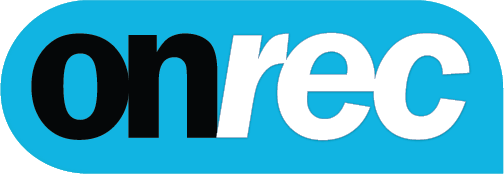Inefficient use of CAD technology in industry wastes millions of pounds each year. It is vitally important that HR teams within UK businesses have the tools to quantify the skills of new Computer Aided Design (CAD) members of staff, to make sure that they are right for the role in question, and that the role in question is right for them. Companies need to ensure the optimum performance of technical staff, who work at the coal face to deliver crucial workloads accurately within a highly pressurized environment.
Many companies today employ CAD technology on multiple projects at the same time, often across a number of different offices, even across several locations worldwide. This combined with the trend towards outsourcing and off-shoring of production information work, means it is essential to be able to benchmark the performance of teams using CAD software to maintain high standards.
It is essential that design and construction firms are able to quantify the performance of CAD teams, particularly when recruiting new staff. More enlightened firms are responding to this need by implementing a roadmap to enable a better return on their considerable investment in CAD technology.
At the same time, HR teams need clear direction on how to improve CAD operative standards. Until recently, lack of quality information relating to CAD productivity and performance has meant that HR teams have not been able to develop appropriate training plans, and develop a more strategic and accurate approach to recruitment, resourcing, new staff inductions, software upgrades and annual appraisals. HR and IT managers can both benefit from a clearer understanding of an individual's ability to use CAD software. Communication between HR management and IT management can be improved with better visibility of each individual candidateís core skills.
When planning CAD training and development programs, it is important to consider each user and the typical circumstances in which CAD is used during the course of their work. Some may be full-time users, while others may only use the tool occasionally.
A project running in the UK construction industry since 2003 has captured the results of over 6,000 individual CAD skills assessments; all taken using independent testing software. The results comprise a national CAD Benchmark ñ a standard against which companies can compare their own staff CAD performance ñ and have set meaningful targets for improvement.
It is estimated that a staggering 75 per cent of the UK construction industry working drawings produced during the design stage are created using CAD software. In a sector estimated to make up about 10 per cent of UK GDP, approaching 95 Billion each year, the fact that so many firms are dependent upon the accuracy and efficiency of their CAD operatives is significant.
Missed deadlines, project re-working, problems on site caused by inaccurate drawings ñ a host of issues can lead to construction projects experiencing delays during build phase which could easily have been avoided with better working practices at the design stage. The consequences of inaccurate drawings can be significant, not just in terms of the knock on effect across the entire project, but financially technical errors and slow delivery of drawings can have an immediate impact upon the projectís financial profits and ultimately the bottom line of the entire company.
Architects, Civil Engineers, Structural Engineers, Technologists, Building Services Engineers, Technicians, Surveyors, Landscape Designers, House builders, Contractors ñ each use CAD in a distinctly different way. Tailoring training and development plans to reflect these individual needs is not only more effective, but costs less too.
Companies identifying individual user ability and experience using CAD can consider a range of options:
ï Appoint a CAD reseller or preferred training partner to conduct one-to-one interviews with staff to gauge their level of CAD experience.
ï Task the CAD management team with developing an in-house 'CAD test' for existing teams and new recruits.
ï Appoint a preferred recruitment agency to quantify CAD knowledge during their initial candidate interview and to reference check the CAD credentials of potential new starters.
ï Investigate more formal examinations, such as C&G (City & Guilds) 2D and 3D CAD, CAD vendor certification exams post-training, or the ECDL (European Computer Driving Licence) 2D CAD course.
ï Search the web for a 'multi-choice' question-type assessment which captures individual CAD knowledge.
ï Use a CAD skills assessment software package to benchmark CAD teams and feed performance data into more targeted training and recruitment programmes.
A number of engineering consultancies, architectural practices and local authorities have adopting the assessment software approach to help measure and improve CAD productivity. The results of every assessment allow each organisation to access, sort and analyse their data and then apply the outcomes to their business.
The assessment data feeds into specific, targeted training programmes and workshops for AutoCAD and Microstation (the two most commonly used CAD software products in the UK). It can also benefit firms when used as part of a structured recruitment process.
To highlight the risks of recruiting unknown CAD personnel ñ a six month live exercise was carried out across nine UK firms of engineering and architectural practices. During this time the basic CAD skills of 85 recruits were assessed at interview.
Performance spread of 85 candidates assessed at interview, Score vs Time
Accuracy scores achieved by those taking the exercise ranged from five per cent to 95 per cent. The time the candidates took to complete the assessment ranged from 26 minutes to over four hours!
Once a company knows what people can and can't do with CAD, the firm can both provide a more valuable induction process for new recruits, and know where to place new starters within their organisation with confidence.
Benefits to be gained from benchmarking CAD productivity include:
ï Gain visibility of CAD skills
ï Identify individualsí strengths and weaknesses
ï Better CAD training plans for staff
ï Improve recruitment processes
ï Share performance data across an organisation
ï Promote collaborative working between teams and offices
ï Measure the performance of outsourcing or off-shoring partners
ï Best practice for CAD development
ï Clearer staff inductions
ï More meaningful staff appraisals
ï Better skills resourcing for projects
ï Continuous improvement process for CAD
ï Save time and money
ï Best value for clients
The research has shown that by targeting simple performance improvements each year, companies can make significant productivity gains.
Take an average salary of 25k p.a. and a 225 day working year.
For every one per cent improvement in productivity, a practice could save 250 or 2.25 days per person per year.
A target of five per cent annual improvement in performance is worth 1,250 or 11.25 days per person per year. Remember that 11.25 days is the equivalent to 90 working hours, based on an average eight hour working day.
All of this means that a company with 20 staff could be seeing a saving that is worth the equivalent of a new member of staff! (20 x 1,250 = 25,000).
Money and time can be saved by improving visibility of the CAD ability of incoming staff?
Employing inappropriate personnel for 3 months can be expensive! Consider the following:
Permanent:
Assuming a 25k annual salary:
15% agency fee = 3,750
3 monthsí salary = 6,250
Contract:
Assuming 18/hr:
7.5 hrs x 5 days = 675 x 12 weeks = 8,100
These examples donít include advertising costs for staff employed direct, or the cost of re-working for drawings which werenít done right first time.
Benchmarking CAD Skills for recruitment gives greater efficiency

New approach gives HR managers support in assessing technical competence of candidates





